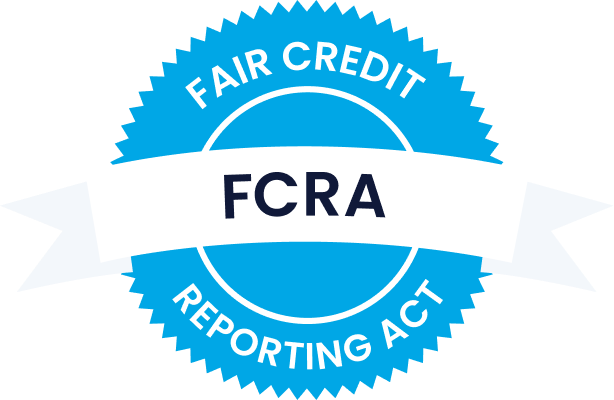Are you a new landlord still learning how to rent your property in California? If you want to land a great tenant and stay on the right side of the law, this guide will help you through the entire process, from vetting potential renters to approving the tenant and ending tenancies.
Understanding California’s rental guidelines
Regardless of whether you’re renting a single property, multiple units, or even a multi-family housing unit, understanding the state-specific guidelines and both required and recommended paperwork will make the process easier. Plus, being more organized will allow you to focus on other important parts of the management process, including the following:
- Minimizing your vacancy rates
- Managing maintenance requirements and costs
- Creating a more appealing home for renters
- Generating extra income in other ways
Keep reading to learn more about everything you need to consider to become a more successful landlord in California.
Residential rental application
This is where the tenant selection process starts. As a landlord, this application form allows you to confirm a potential tenant’s identity, check their rental history, and get the information necessary for credit checks. You can download a template of a residential rental application form here.
Rental application form fees
California has a maximum rental application fee based on the consumer price index. This fee also can’t exceed your actual out-of-pocket costs. The maximum rental application fee varies yearly. If no rental units are available when the prospective tenant applies, you can’t charge this fee until one is available.
Managing the rental application process
The rental application process is important for both tenants and landlords. For landlords, it helps answer several important questions about the person or people renting their property: Is an applicant reliable? Do they have the income necessary to afford a specific property? Do they have a positive history with other creditors?
This is why California law allows you to ask for several pieces of information from applicants during the screening process:
- Full name, as well as any other aliases or other names used in the last 10 years
- Date of birth in some situations
- Social Security Card (optional), as long as you believe you can keep this information private
- Driver’s license or state ID number and expiration date
- Contact information, such as a phone number or email address
- Information for other potential tenants over the age of 18
There is also information you can legally request with the consent of the tenant, including the following:
- Current and prior residence information, including the contact information for previous landlords
- Employment history, including company names, manager names, phone numbers, and email addresses from previous employers
- Letter from employer
- Proof of income
- Credit history
- Eviction background check
Although references are commonly requested, you must explicitly receive signature confirmation that authorizes you to contact an applicant’s past landlords and employers. You will also need explicit confirmation that allows you to conduct background and credit checks.
Here are some helpful and valid questions landlords can ask during the application process:
- Do you have pets?
- Do you own a vehicle?
- What is your monthly income?
- Have you declared bankruptcy in the past?
- Do you smoke?
It’s typical to ask questions during the pre-screening process in addition to questions on the rental application. Check out these suggested questions for landlords to screen potential tenants so you can learn as much as possible about your prospective tenants.
Lease agreement, addendums, and inspections
Once you’ve approved a rental application, you’ll need a rental agreement, as well as several other documents during the tenancy:
The lease agreement outlines the expectations for both the tenant and the landlord. This agreement is binding and legal and must be in writing. Written agreements ensure that both parties understand the terms. The landlord and tenant can also refer to the written agreement if a dispute emerges rather than making verbal agreements, which either side can break. A lease agreement can also protect landlords from legal ramifications associated with discrimination.
A lease agreement is the most important document because it covers all the agreed-upon terms, including the cost of rent and the due date, security deposit fees, and other regulations. Suppose a tenant or a landlord acts against the terms stated in the lease. In that case, there can be legal ramifications.
The move-in report identifies any existing damage to a rental unit, so these damages can’t be removed from the security deposit when a tenant moves out. Many landlords will provide this at the beginning of the rental agreement to document any pre-existing damages to the property. According to California civil code, a tenant can also ask the landlord to inspect the rental unit before the tenancy ends, identifying any issues that would justify a deduction from the security deposit.
A landlord might request a holding deposit to reserve the unit. Once the landlord receives the holding deposit, they will remove the rental unit from the market. The rental unit is reserved until the tenant pays the security deposit, and sometimes, the first month’s rent, based on the agreed-upon amount. Depending on the provisions established, if a tenant does not move in, the landlord can keep the holding deposit fee (unlike a security deposit).
A tenant can waive the right to receive copies of invoices, receipts, and a landlord’s itemized statement listing all deductions from the tenant’s security deposit. The security deposit is an agreed-upon amount the landlord holds if the tenants cause any damages. The waiver must contain text from the security deposit statute. In addition to the itemized statement, the property manager must include all copies detailing charges collected and deducted from the security deposit. Tenants will waive the right to receive copies of invoices when they disagree or question the amounts deducted from their security deposit.
A pet addendum includes any restrictions you might put on a tenant who will own a pet in your rental unit. This may include restrictions on breeds and weight and specified pet fees. A pet security deposit fee can be listed in the addendum. In California, a service or support animal must be allowed with no additional fees, even in rental units that do not allow pets.
If you need to enter the rental location for repairs, services, or to show prospective tenants the property, you must supply tenants with a Notice of Intent to Enter. Under California law, you must give notice in writing, and it must be at least 24 hours in advance if it is delivered personally or six days in advance if it is mailed. A few exceptions exist for genuine emergencies, abandonment, or court orders.
If you have decided to increase the rent the tenant pays for a specific property, you must attach a Notice of Rent Increase to your rental agreement. Rent control is in place for some locations, and in some cases, there may be anti-price gouging laws that control rent increases. In 2019, California authorized the Tenant Protection Act (AB 1482), creating tenant protections.
For most California residents, there are caps on rent increases. Landlords can increase the rent by 10% or 5%, plus the inflation rate, whichever is lower over a 12-month period. You must submit a 30-day written notice for a 10% or less rent increase.
There are exceptions to the 10% rent increase cap. The tenant protections do not apply to:
- Apartments built in the past 15 years (tenants will gain protection once their building turns 15)
- Some single-family homes owned or controlled by a corporation
- Mobile homes
- Duplexes where the owner is living in one of the units
- Dormitories
- Some affordable housing
If you are increasing the rent by more than 10%, you must give at least 60 days’ notice. This is cumulative. So if you raise rent by 5% in March and 6% in June, you must give at least 60 days’ notice for the June increase.
Many landlords work with attorneys or property managers to stay informed of new legal developments that might impact how much you can raise the rent or what you can do because of lease agreement violations. Rent increases and eviction reforms may change due to unique circumstances. For example, during the COVID-19 pandemic, there was a temporary suspension on evictions associated with unpaid rent to help alleviate economic instability.
Landlords can break the lease with their tenants, but they still have legal obligations. If the tenant signs a lease agreement contract, they must pay their rent and follow other regulations detailed in their lease agreement.
When tenants fail to pay rent and ignore rules in the lease agreement, a landlord should provide the appropriate notices to the tenant.
Documents for ending a tenancy
Several different types of documents are available to a landlord to end a tenancy depending on the situation, including:
This is a notice you can serve a tenant when you believe the tenant is behind on their rent, letting them know they have three days to either pay the overdue rent or move out. It must include exactly how much rent is owed. Late fees or utilities can’t be included.
This is a notice you can serve a tenant if the tenant isn’t following a rental agreement, such as having an unauthorized pet or disturbing their neighbors, letting them know they have three days to fix the problem or move out. In some California cities, it is required that the landlord send a general letter about the problem before sending this notice.
You can serve a tenant this notice if you believe they’re responsible for a more serious concern, such as doing something illegal on the property, causing major damage, or subletting the home without your permission.
This is the most common notice to end a tenancy and is used for month-to-month rentals. A 30-day notice can be used if the tenant has been renting for less than a year, while a 60-day notice must be used if the tenant has been renting for a year or more. Landlords will need “just cause” before submitting this notice.
This type of notice is only available for Section 8 subsidized housing. The landlord must have legal reasoning or “just cause” to ask the tenant to move, and the notice must also indicate that the tenant has 10 days to talk about the notice with their landlord.
Tenants should be alerted at least 90 days before the property sale is made public. If the tenant lawfully resides in the unit, the tenant must be given a right of first refusal to purchase the unit.
Many cities and counties in California are subject to rent control. It’s common for there to be restrictions on when you may or may not end a tenancy. In most cases, a specific legal reasoning or “just cause” is required to terminate a tenancy under the Tenant Protection Act of 2019 (Bill 1482). Tenants are protected against eviction without justification. Additionally, under Bill 1482, landlords must cap the rent increase to 5% plus inflation.
Both landlords and tenants are bound to the terms written in the tenancy agreement, including penalties for vacating before a fixed-term lease expires or how much notice a tenant and landlord must give to end a month-to-month lease. Understanding your legal obligations or having a property manager interpret tenancy laws when ending a tenancy is essential since restrictions apply to both tenants and landlords.
In California, landlords need a valid reason to end a fixed or periodic tenancy. Here are some reasons why a landlord can legally evict a tenant:
- Non-payment of rent
- Breaking rental agreement terms
- Disorderly conduct, including excessive noise complaints and criminal behavior
- Severe damage to the rental
- If the landlord needs to sell the home (restrictions apply)
Successful landlords must have the tools to protect their property and ensure their tenants will be trustworthy. These documents are an important part of that process, but screening prospective tenants appropriately is the first step toward ensuring a strong relationship with your tenants.
Important notes on rental documents in California
Rental agreements and leases are complicated transactions with responsibilities and rights that protect the tenant and landlord. Landlords must understand the following terms and agreements to avoid legal trouble. Here are different types of rental agreements:
The two types of rental agreements
There are two common types of rental agreements: fixed-term tenancy and periodic tenancy. A fixed-term tenancy is the kind of agreement where both the tenant and the landlord agree to a specified rental period of longer than a single month. A 12-month period is most common for a fixed-term tenancy, but you can offer six-month rentals, 18-month rentals, and other options. In California, a fixed-term tenancy automatically becomes periodic once it ends unless both parties agree to another fixed-term tenancy.
A periodic tenancy agreement is a month-to-month rental with no definitive end date. Certain types of rentals may even rent week-to-week. Those who rent month-to-month for over 12 months in California are often provided more protections.
In California, regardless of whether the tenancy is fixed-term or periodic, you will usually need a specific legal reason to send a notice requesting that your renters move. It is illegal for you to request that your tenants move simply because you no longer want them on your property.
Fixed-term lease addendums
Lease addendums are modifications of the original lease. An addendum should be filed any time you change something originally agreed upon. For example, if a tenant originally rented without a pet, then added a pet to the lease agreement, that would be an addendum. This helps track what was originally agreed upon and what was added later.
If you work with a property management company, real estate agent, or property attorney, they may handle the residential property documentation. Working with a third party can be a great investment, especially if you’re managing multiple properties.
Application questions landlords should not ask tenants
Landlords are legally prohibited from asking certain questions to reduce potential discrimination in the rental process. In California, you are not allowed to ask questions about or discriminate based on:
- Race or color
- Ancestry or national origin
- Religion
- Disability, including mental or physical
- Sex, gender, gender identity, or gender expression
- Sexual orientation
- Genetic information
- Marital or familial status
- Source of income
- Military or veteran status
- Citizenship or immigration status
- Primary language
- Age
- Domestic violence
- Certain kinds of encounters with the legal system
These elements are based on the Fair Housing Act, which is a federal act, the Unruh Civil Rights Act, which is a California-based act, and certain other civil acts in California. You should also avoid advertising to attract people to your property based on one or more of these factors.
One of the unique anti-discrimination policies in California is related to criminal convictions. You are not allowed to deny housing to someone based on arrests that did not end in a conviction, infractions or petty charges, or convictions that are sealed, expunged, or dismissed. Landlords can consider denying a rental application due to “directly-related convictions” that threaten other residents, housing providers’ employees, and property damage. In Oakland and Berkeley, landlords can’t conduct criminal background checks on prospective tenants.
It’s important to talk to a lawyer to ensure you’re not asking any questions that could violate these guidelines, especially because they can be confusing and based on individual cities. These acts aim to ensure all individuals in the United States and in California have equal opportunities.
Rental history and issues landlords must disclose
When drafting a rental agreement, one of the landlord’s duties is to ensure that the unit’s history and issues potentially affecting the tenant are disclosed out of good faith and fairness.
The move-in inspection is essential for documenting any property damages. The inspection also allows tenants to carefully look for potential health hazards, red flags, or signs of decay, like crumbling pipe wrap or paint flaking on the walls.
Landlords must give written notice to tenants about all of the following issues associated with the rental property, as detailed in the California Tenants Guide to Residential Tenants’ and Landlords’ Rights and Responsibilities:
- Asbestos: This can be found in textured wall paint, pipe, or ceiling insulation in older homes or buildings. Asbestos can cause serious health problems when the asbestos particles become airborne. The landlord has to disclose the presence of asbestos.
- Other carcinogenic material or toxic chemicals: The Safe Drinking Water and Toxic Enforcement Act of 1986 (Proposition 65) requires any housing provider or employer to provide written warning of potential exposure to carcinogenic material or toxic chemicals and particles, including asbestos, benzene, and lead.
- Demolition: Landlords must notify prospective tenants of a demolition plan before starting the application process. A property manager must give a written demolition notice to a prospective tenant before taking any deposits or holding fees.The notice must indicate the estimated end-of-tenancy date due to demolition, even if that date is beyond the lease expiration date.
Other warnings property managers are required to disclose to all tenants include the following:
- Military base or explosives: If there is a military base or a known military explosives storage depot within one mile of the rental property
- Death in the rental unit: If someone died in the rental unit within the last three years
- Flood hazard: Landlords must disclose if the rental is located in a flood zone
- Lead-based paint disclosure: Landlords are required to disclose any lead-based paint or any other lead-based hazards that are present on the property
- Bed bugs: Landlords are required to disclose any bed bugs
- Megan’s Law: This law requires landlords to include the following language in the rental agreement:
“Notice: Pursuant to Section 290.46 of the Penal Code, information about specified registered sex offenders is made available to the public via an Internet Web site maintained by the Department of Justice at www.meganslaw.ca.gov. Depending on an offender’s criminal history, this information will include either the offender’s address or the community of residence and ZIP Code in which they reside.”
FAQ: Essential documents residential landlords need
A move-in inspection is not required in California, but it’s always a good idea. We recommend that all landlords use a move-in inspection report like this one to conduct the inspection for their records.
Additionally, California law does require that if the resident asks, you must provide a move-out inspection report before the actual move-out date, where you indicate problems that you would need to fix using the tenant’s security deposit. The tenant then has a chance to fix these problems independently before moving out.
We always recommend making payment arrangements first with your tenant. It can be expensive and difficult to find a new tenant for a property, and while you’re looking for someone new, you won’t be getting rent payments.
The next step is to send a 3-Day Notice to Pay or Quit. This gives the tenant three days after receiving the notice to pay their overdue rent or move out. If the tenant chooses to move out, you are legally allowed to use the security deposit to cover unpaid rent, and you can also sue the tenant for additional amounts owed.
If the tenant does not move out or pay, you can file an Unlawful Detainer lawsuit, colloquially called an eviction lawsuit. You are not allowed to lock out or physically remove the tenant or their belongings from the property. You must go through the courts to have someone removed from the property.
There are many legal requirements regarding this kind of lawsuit, and if you don’t follow all of the requirements, the court can throw the lawsuit out. Always seek legal advice if you’re unsure of what to do next. An attorney will be more knowledgeable about your options in this situation.
According to the Tenant Protection Act, landlords have a cap on the percentage increase they can raise rent yearly. Most landlords can raise the rent by a maximum of 5% plus inflation per year, up to 10% yearly. However, you can choose to do this increase at any time. Most landlords choose to do it once when renewing a lease, but you could increase rent every six months or every three months as long as the yearly increase doesn’t exceed the maximum cap. Not all properties are covered under the Tenant Protection Act, so your requirements may differ.
Individual cities, counties, and even neighborhoods may have their own rental control requirements. Always research to learn more about what rental restrictions apply every year.
It depends on how long they’ve lived on the property in California. If they’ve lived there for at least 12 months, you must give at least 60 days’ notice. If they’ve lived there for less than 12 months, you must give at least 30 days’ notice. If you provide Section 8 housing, you may be required to provide 90 days’ notice.
Additionally, because of the Tenant Protection Act of 2019, you may need to provide just cause for ending the rental agreement if the tenants have lived in the home for over a year. This is even true in month-to-month rental agreements.
Our final thoughts
Housing is a complicated industry, which means that being a landlord can be a full-time job for many people. It’s not always easy to determine your legal rights and obligations as a landlord. With tenant screening services like SingleKey, landlords can simplify the renting process and ensure they remain legally compliant when assessing potential tenants.
This blog post is intended for general informational purposes only and is subject to change. It is not intended as legal advice. Consult your local laws and seek professional legal counsel before making any decision or taking any action based on this post.





